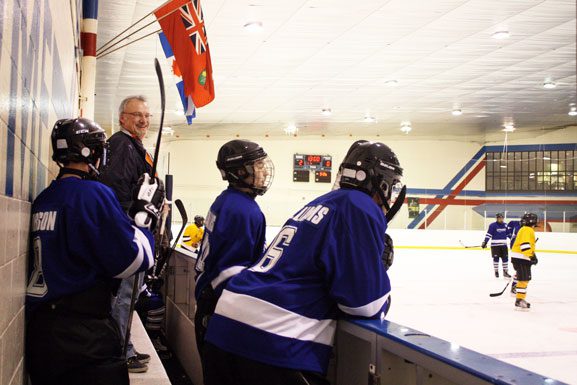Steve Negovanlis arrives at the Don Montgomery Arena in Scarborough ready for the game. The team he coaches, Wee Watch, is about to play its only game of the week. The players’ eagerness to get on the ice shows on their faces and it is clear the players and their coach have a passion for the game.
“At the house league level, they try to keep (hockey) as affordable as possible,” Negovanlis said. “It’s not super competitive, it’s more recreational.”
However, there is a troubling development going on at the higher levels of junior hockey, writer Ken Campbell says.
“When you get to the elite levels, the triple A … it’s very expensive, usually upwards of $10,000,” says Campbell, author of a new book, Selling the Dream: How Hockey Parents and Their Kids Are Paying the Price for Our National Obsession.
Other fees that can be factored in can put the annual cost well over that figure, he adds.
Not only is the game getting more expensive, but there are a limited number of outdoor and publicly funded rinks, making it hard for lovers of the game to get the ice time they want. Scarborough has only one outdoor rink.
If you’re being turned away at a young age, how likely are you to continue having a passion for hockey?
— Ken Campbell
Campbell, who is a Scarborough resident and columnist for The Hockey News, sees this as cause for concern.
“If you want to continue some grass roots participation … and you want to keep people engaged and fit, I think it’s incumbent upon municipalities and cities to provide that infrastructure,” he says.
“If we can put those rinks up and make them accessible … maybe you’ll see people use those facilities and become hockey players.”
The hope of career advancement has in some cases overtaken the love for the game, he says. It has also become one of the main reasons parents want their kids to participate at the elite level.
“I worry about whether or not we’re going to have enough beer-league players in 20 years. If you’re being turned away at a young age, how likely are you to continue having a passion for hockey?”
With the rising cost of the sport and this growing problem of accessibility, the future of hockey might not be at stake but the nation might lose out.
“It’s (hockey) who we are as Canadians — I don’t think it will ever go away,” Negovanlis said. “I just think that there’s probably some good talented kids that will never have the opportunity (to play hockey.) You don’t know where your little shining star is or your diamond in the rough unless you expose them to it.”

